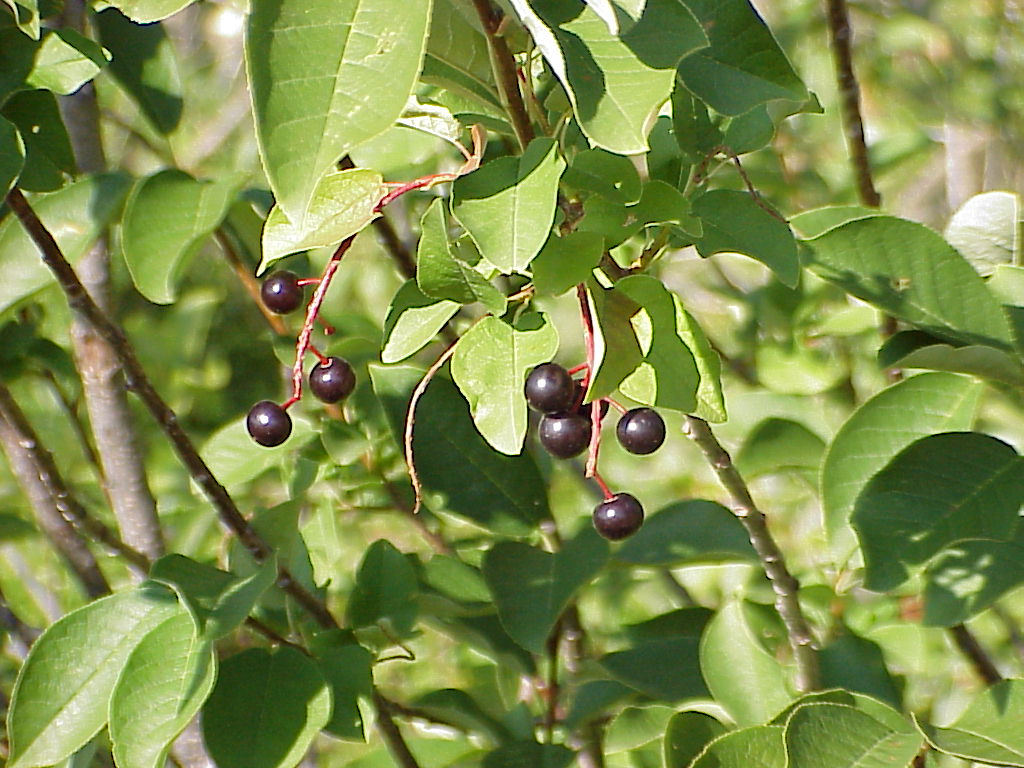English
chokecherry
Scientific Name
Padus virginiana
Arapaho
Chokecherries and the Arapaho
Food: dried food, fruit, sauce, winter use food. The etymology of this word can be traced to Proto-Algonquian *miin = ‘berry’. These berries were and are the most important of all berries for the Arapaho. They are eaten fresh, made into a “gravy” (biine’eek) which can be eaten plain or added to other dishes, and added to dried meat and lard to make pemmican (ceb in Arapaho). The basic preparation method is to grind them on a stone, including the seeds (though in modern times the seeds are often removed), then form them into patties, which take about a week to dry. Whenever gravy, pemmican or another dish is needed, the dried patties are available. These patties can be kept indefinitely, and are used ceremonially during the Sun Dance.
Bush: biinonoo’oe’; ‘chokechery bush’
hóówoo’ = 'thicket of chokecherries'
Drug: anti-diarrheal. Arapahos today use a tea made from the inner bark of the shrub, which is then ground up, to “plug people up” when they have diarrhea.
